We now know where most of it went: soaring imports of crude oil.
We know this because as the chart below shows, Chinese crude imports via Qingdao port in Shandong province surged to record 9.86 million metric tons last month based on data from General Administration of Customs.
As Energy Aspects pointed out in a report last week, "Imports through Qingdao surged to another record as teapot utilization picked up, leading to rising congestion at the Shandong ports."
And sure enough, this kind of record surge in imports should promptly lead to another tanker "parking lot" by China's most important port. This is precisely what happened when according to reports, some 21 crude oil tankers with ~33.6 million bbls of capacity signaled from around Qingdao last Monday, according to data compiled by Bloomberg. 12 of those vessels, with about 18 million bbls, were also there 10 days earlier, data show.
As Bloomberg adds, port management had met to discuss measures to ease congestion, citing an official at Qingdao port's general office, however for now it appears to not be doing a great job. Incidentally, putting Qingdao oil traffic in context, last year the port handled 69.9 million metric tons overseas oil shipments, or ~21% of nation's total crude imports, more than any other Chinese port.
So what caused this surge in demand? The answer is China's "teapot" refineries.
According to Oilchem.net, the operating rate at small refineries in eastern Shandong province rose to 51.84% of capacity as of the week ended Apr. 22. The utilization rates climbed as various teapot refiners completed maintenance and restarted production.
How much of a boost in oil demand did teapot refineries represent? Well, the current operating run rates is averaging 50.42% this tear compared to just 37.72% a year ago, Bloomberg calculated.
Notably, this may be just the beginning. As Bloomberg adds today, China, the world's second-biggest crude consumer, may be poised for another increase in imports after the number of supertankers bound for the Asian country's ports rose to a 16-month high amid signs it's stockpiling.
There were 83 headed to China, the most since December 2014, according to a ship-tracking snapshot compiled by Bloomberg on Friday. Assuming standard cargo sizes, they would be able to deliver about 166 million barrels.
Others also noticed China's ravenous demand. As JPM reported in a note last week, China crude imports rose in February and March after dip in January. The total crude imports (a number which certainly should be taken with a salt mine) was 7.7 million bpd in March, up 21.6% compared to last year. Furthermore, 2016 YTD imports are running 12.3% above the same period in 2015.
Where is China getting the most of its oil? Cue JPM:
Atlantic Basin, Russian imports strong in March at the expense of Middle East. In total, Atlantic basin - sourced crude was 28% of total imports, up from 25% the month prior, while Middle East - sourced crude was 44% of imports, down from 51% the previous month. Russian imports were the second highest on record at 4.6 million tons (up from 4.1 million tons in February), well above Saudi Arabia (4.0 million tons). Russia imports were 14% of total Chinese imports. The strength in Atlantic Basin exports primarily came from Venezuela, Colombia, and Brazil, which were all at or near record high.It appears that at least China is delighted to take advantage of the ongoing OPEC production chaos and massively oversupplied oil market.
Furthermore, as ClipperData reported moments ago, Chinese waterborne crude oil imports are on pace for another record high this month.
However, while China is importing at a near record pace, is there also an offsetting increase demand? There was early in the year as shown in the chart below, but as of March the answer appears to be no. According to JPM, apparent oil demand was down slightly. Because while crude oil processed by Chinese refineries remained high in March, roughly unchanged month-over-month, after accounting for net product exports, apparent oil demand was 10.3 mbpd in March, down 2.3% from February and down 2.5% year-over-year.
So supply is soaring, demand is declining, which means just one thing: "China is hoarding crude at the fastest pace in at least a decade", according to Bloomberg, filling up excess inventory capacity at a record pace.
The punchline:
The nation added 787,000 barrels a day to stockpiles in the first quarter, the most for the period since at least 2004 when Bloomberg started calculations based on customs data. Its imports climbed in March from countries including Iran, Venezuela and Brazil.For now - with the record credit impulse still reverberating across its economy - China's demand is relentless, and is keeping virtually all producers busy: "we've seen crude buying in recent months coming from a very broad range of sources, more coming from Latin America and more from Europe," said Richard Mallinson, an analyst at Energy Aspects Ltd. in London. Shipments are being boosted by so-called teapot refineries and may also be advancing in preparation for the end of refinery maintenance programs in China, he said.
However, the party may be ending.
China's pace of imports may drop substantially in coming weeks as the teapot operating rate starts to drop next week, as many refineries are scheduled to start repairs, just like in the US.
Meanwhile, the oil production glut persists, and if suddenly China can no longer take advantage of all those tankers overflowing with oil for the next few months as teapot maintenance takes place, the world will suddenly realize that the spike in Chinese excess demand, driven by the biggest credit impulse in history, may be over, at which point attention will once again shift to an oil market that remains in a state of pernicious imbalance as a result of weak global demand, record OPEC production, and a critical storage situation as there is ever less onshore and offshore space in which to store all the excess oil.
Judging by today's oddly rational drop in the price of crude, attention may already be shifting...
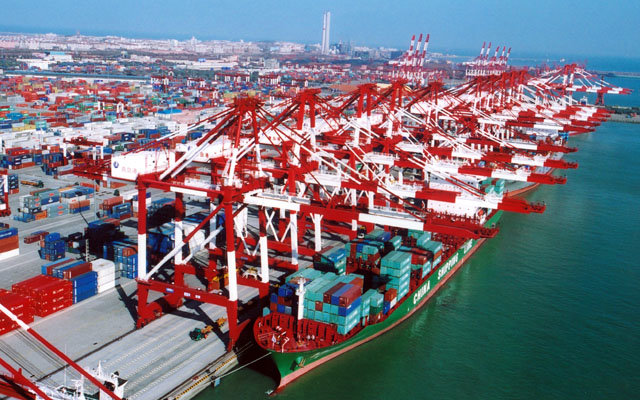
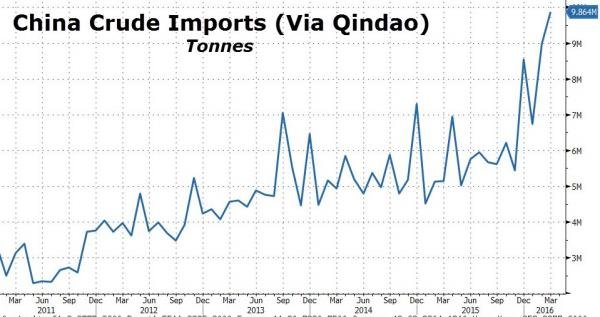
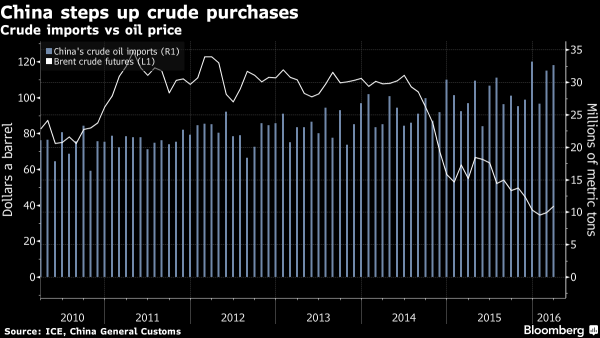
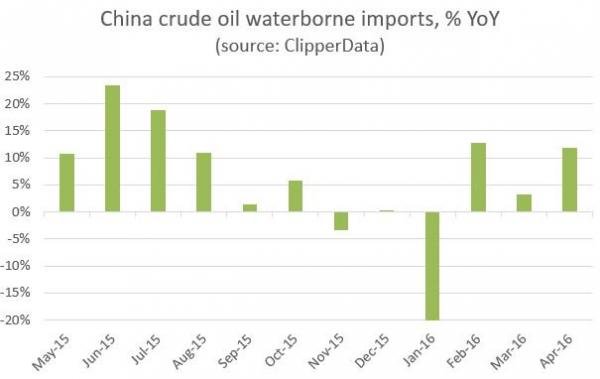
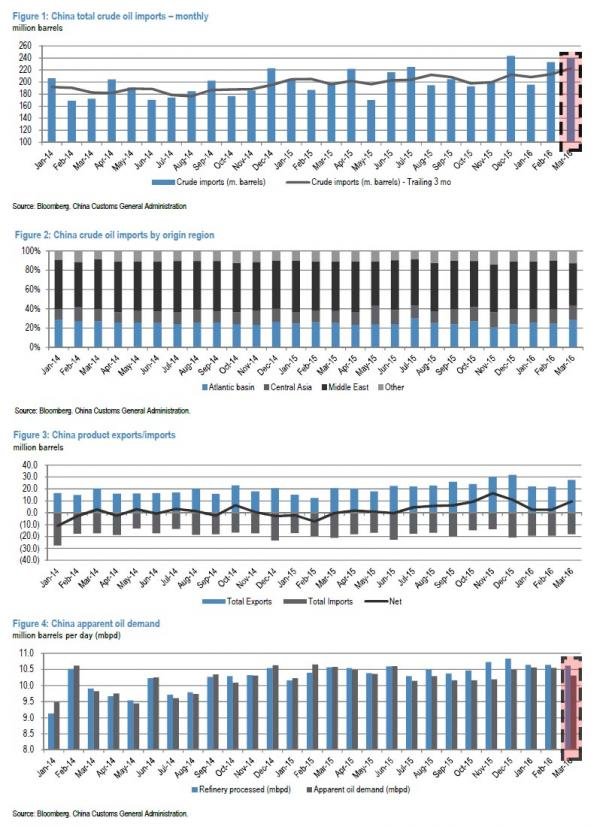



Reader Comments
to our Newsletter